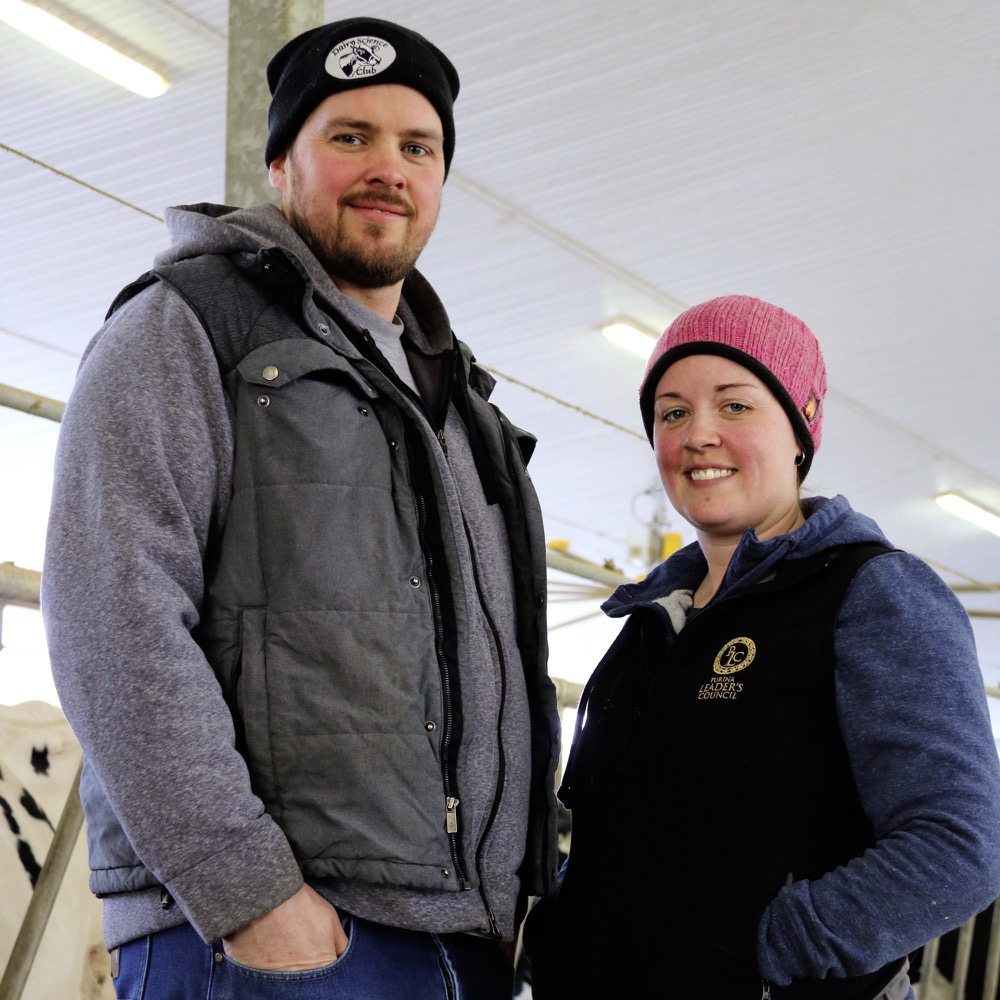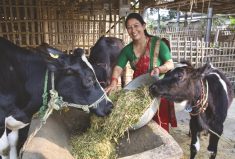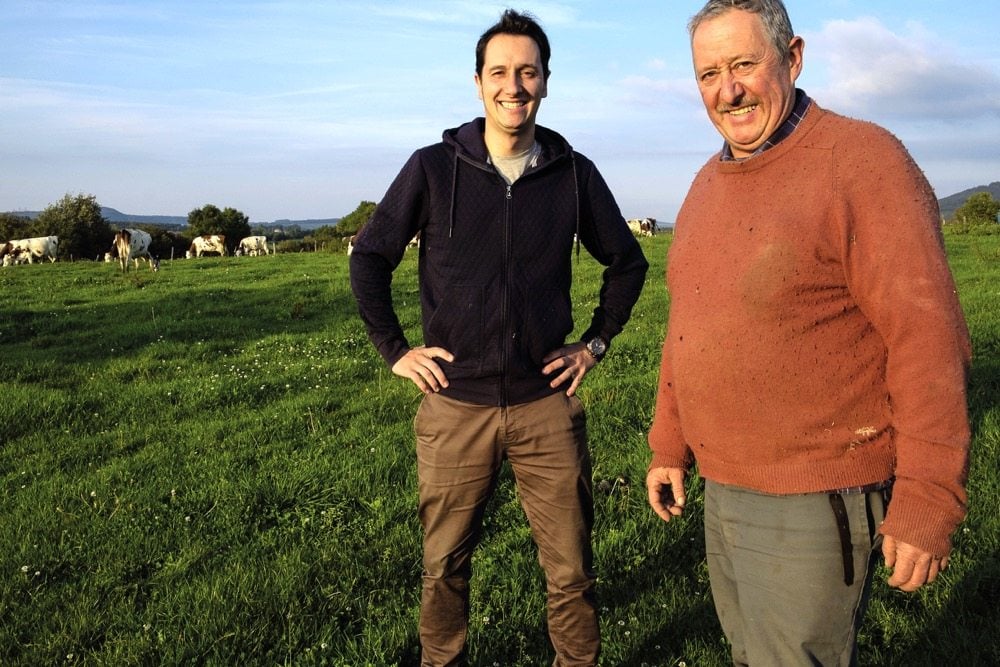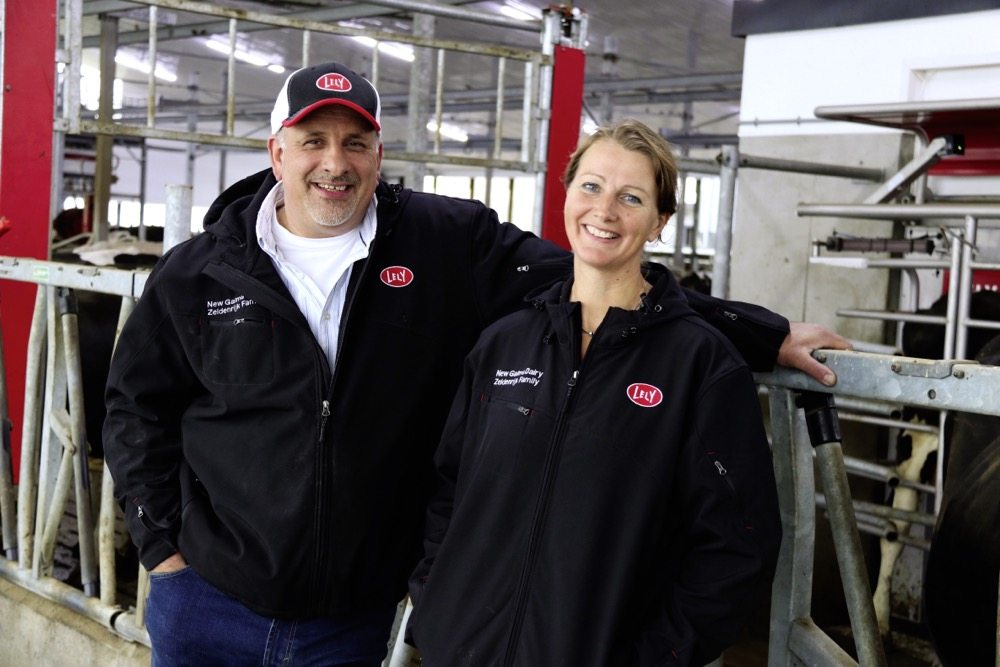Brothers and sisters are working together on more farms all the time. More and more too, there are multiple siblings on these farms, not just one of each.
To outsiders, it can seem like so many more chances for family to get in the way, and so many chances for old rivalries to flare up.
On the inside, though, it means so many more chances for some really amazing success stories.
For our March 27, 2018 issue of Country Guide, we talked to brothers and sisters in two such farming operations, and in both cases we found they’ve learned as they’ve grown. Today they say that farming as brother and sister is just something they do. But can it ever really be that simple?
Read Also

Youth focused on keeping Quebec’s dairy industry strong
In part two of our Making the Future series, Country Guide spoke with Béatrice Neveu from Rawdon, Que. (Read part…
At 9 a.m. most days Mary Ann Doré and Graham Johnston can be found much as when they were when growing up as brother and sister — having breakfast together.
The location is no longer their parents’ kitchen, though, but the modern office and kitchen at the front of their dairy barn near New Dundee, Ont.
There they are joined by Mary Ann’s husband Joe Doré and her father James. The morning breakfast, after milking, is a chance for the family at Heritage Hill Farms to get together to decide on priorities for the day and to make decisions, aided by the busy white board that lists what’s happening on the farm.
The family’s journey to its present farm involves seizing opportunity, but also making conscious decisions that have allowed Graham and Mary Ann to farm together.
The successful family partnership, which also involves Graham and Mary Ann’s parents James and Frances Johnston and their sister Claire, who works off-farm, runs smoothly. Previous generations set precedents for successful business succession, which this generation has followed.
“Our family has long gotten along,” says Mary Ann. “There’s been peaceful transition through the generations.”
The family is celebrating 175 years farming in Canada. Johnstons moved to Toronto Gore Township, now known as the City of Brampton, in 1842, 25 years before Canada was formed.
The encroaching city and a desire to grow resulted in a move to near New Dundee, Ont., in 2011.
There are now numerous cows under different prefixes in the herd — a throwback to the family’s focus on quality cows. Graham uses the Gore Lane prefix, Mary Ann and Joe took over her grandfather’s Gore Cottage prefix and Claire has her cows under Outline Holsteins prefix. Their parents continue to use Jameston Holsteins.
However, once the family was building at its new location it became obvious they needed one business name, with the result being Heritage Hill Farms. The farm is a partnership with numerous family members including both parents, Mary Ann and Joe, and Claire. Graham is a partner, but his wife Amanda, who works in nearby Kitchener, is not. Communication with all stakeholders is important, including Amanda, says Mary Ann, even if she’s not technically a partner.
Both Graham and Mary Ann attended the University of Guelph, Graham in the two-year diploma program and Mary Ann in the four-year degree program.
Graham, the eldest, came home first to farm.
“I never thought there was a place for me, being second born,” says Mary Ann. “It wasn’t a gender thing, there just wasn’t much to do. It was not enough for three full-time people.”
At the time the farm milked between 45 and 50 cows in a tie-stall barn that had been renovated in the 1990s.
“I always thought I’d be a researcher or something,” says Mary Ann. “I realized at school I would be terrible at sales and I missed working with the cows when I was gone. Four years away from them made me want to be back.”
By the time Mary Ann finished university, the city had continued to move out towards the farm, which was then surrounded by an industrial park. It was becoming challenging to find dairy farm suppliers nearby. The time had come to move.
They looked around southern Ontario for a new site and settled on one near New Dundee. The new barn was built and the cows were moved.
“Once the cows were gone from Brampton, Dad was ready to get out of Dodge,” says Graham.
The family now lives in the area around the farm with Mary Ann and Joe living on the property with the barn. The new farm, a modern freestall, has the capacity to house about 100 cows, although they aren’t at that number yet.
The sorting out of roles on the farm fell to each person’s strengths. The family members pitch in when needed to get the milking and other chores done, and they employ a student for the summer months.
There are also standard operating procedures so jobs can be shared.
The family worked with dairy consultant Tom Armstrong when planning the new operation.
He surveyed the six partners and found that they had quite similar views, which he said was rare.
It’s not that they can’t identify some differences.
Mary Ann uses the story of twin cows. One is a great milk producer, the other classified Excellent. “If someone says ‘go get the good one,’ who do you get?” she asks.
She and Joe would prefer the top milk producer, while “Graham and Dad like pedigreed cows.”
“Knowing people’s personalities is almost more important than how skills blend,” she says.
Graham is in the Gay Lea Young Leaders program and that has given him some insight into personalities of family members. He’s more thoughtful and takes longer to make decisions. Mary Ann and Joe are more driver types.
The family has different interests too. Graham’s a curler.
“If we were both passionate about curling and wanted to go to a bonspiel in London, it would be a conflict,” says Mary Ann. “Someone has to stay back and milk cows.
“There is not a lot of overlapping conflict when it comes to personal passions, but our work passions overlap so closely that it works really well in the barn.”
The fact that Graham and Mary Ann are brother and sister means less than the fact that they get along.
There is a frankness to their conversations that helps get things done, which might not be possible if they were both male or both female.
Joe, an only child, says he found that dynamic interesting. “I could say something to Graham that Joe could never say to Graham,” says Mary Ann. That’s why if Joe is texting Graham a message from Mary Ann then he makes sure Graham knows it’s coming from her and not him.
“That was strange for the first year,” says Joe. “You guys would bicker about something and 30 seconds later you’d be laughing.”
There’s a inherent motivation to get along in the business structure. All the partners are equal and they can’t fire each other, so they have to find solutions.
That means working together on projects like a new covered area for their calf hutches, but also to decide to take out a bedding composter that had resulted in serious wintertime mastitis issues, including a serious bout of klebsiella mastitis that resulted in the death of some cows. It was a tough time for the family, but the composter is now gone and the cows are healthy again.
“Working relationships can sometimes take work, but everything runs better when everyone is in a good mood,” says Mary Ann. “It’s worth it to be surrounded by family.”
















